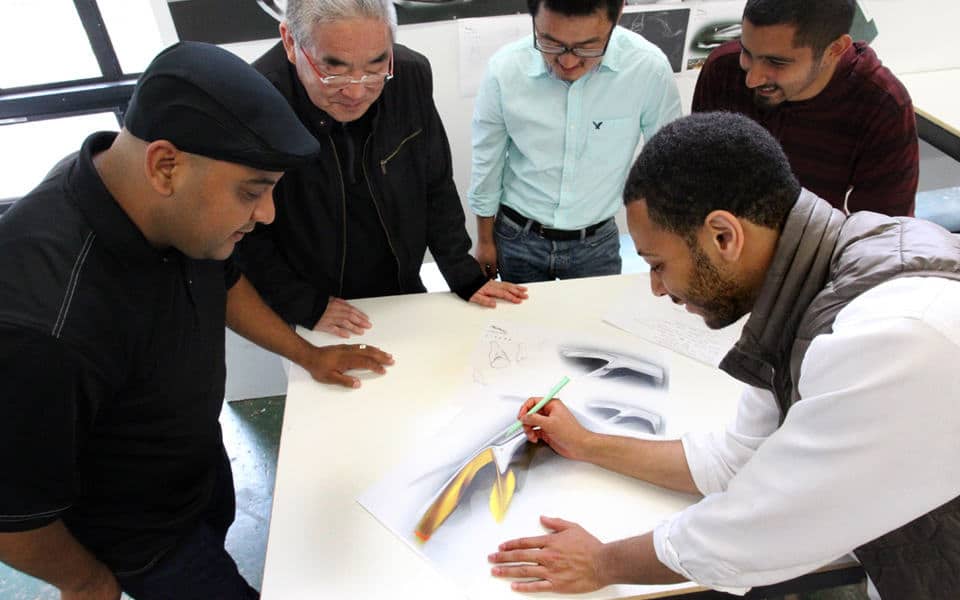The ingenuity and boundless vision of 13 Academy of Art University students—from the schools of Industrial Design, Fashion and Web Design & New Media—was recently displayed in the Academy’s Automobile Museum for a group of executives from Jaguar. Led by Jaguar Design Director Ian Callum, the group arrived in San Francisco to review the work of these students, who spent their summer semester designing and creating concepts for year 2030 Jaguar automobile interior designs. The Academy was one of the two universities Jaguar selected for corporate sponsorship in America.
The Praise
“If I was looking for young designers of the future, this would be on a very small list of universities in the world that I would look at. I was impressed by how the group perceived new technology and usability, and by how they incorporated social media and user trends. It was quite fascinating to see their take on what the users of tomorrow will want to have in a sports car. What was quite warming for me is they thought of a lot of trends that we have been kind of picking up in the studio as well. They really got Jaguar and that lovely balance of innovation and Jaguar craftsmanship. They absolutely nailed it.”
—Alister Whelan
Creative Director for Jaguar Interior Design
The Class
IND494 is a competitive, cross-departmental collaborative class offered in our School of Industrial Design led by Executive Director Tom Matano. To participate in the class, Fashion and Web Design & New Media students must have a 3.0 GPA and prior department director approval.
According to lead instructor Antonio Borja, the School of Industrial Design’s associate director, the class is designed, “to provide students a project with specific guidelines and deadlines—projects that can help them build their industrial design portfolio at Academy of Art University.” The class also seeks to create an environment in which sponsors like Jaguar, “can interact with and see what young designers think of the brand and where it could go as we move toward partially or fully autonomous vehicles.
“The group did a very good job of capturing the essence of Jaguar and pushing the narrative of what driving may become in ways that I didn’t anticipate,” adds Borja. “For them, driving a car will be rare, a luxury. Driving will have cachet, and while cars will essentially be autonomous, you will have the option of driving and feeling the machine yourself. That will be the ultimate luxury.”
Step-by-Step Collaboration
Industrial Design
Ten Industrial Design students separated into groups that worked on digital modeling environments (utilizing Oculus Rift headsets to create an immersive experience for Callum and his team), as well as flatwork and half-scale models and clay models. The results delivered tangible examples of their vision and a showcase of the state-of-the-art equipment at their disposal.
Fashion
A textile design student focused her efforts on the project’s CMF (color materials and finishes) needs. She was tasked with zeroing in on new and innovative fabrics for the concepts’ interiors that consider how they would feel to the human touch, the manufacturability of the cars, and how they represent the Jaguar brand.
Web Design & New Media
Two MFA students worked on the concepts’ UI/UX (user interface/user experience) technology, which supported the group’s ideas for the year 2030 concept automobiles. The group envisioned 2030 to belong to an “Alpha Generation”—a generation born in or after 2010 that will come of age with gaming and touchscreens and interact with Jaguar “on the next level.”
